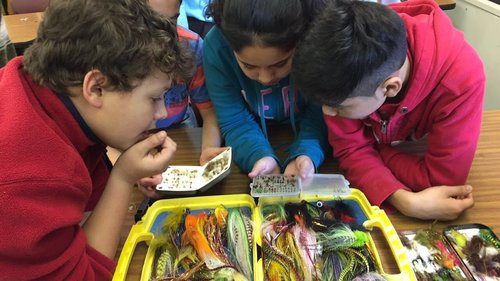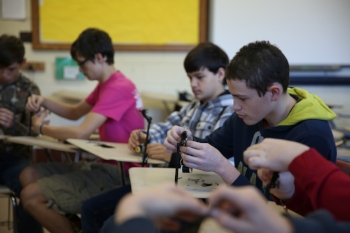


Learning about Amphibians & Aquatic Insects
BRDC has been busy with education programs, working with Galax Middle School, Fries School, Fairview Elementary, Grayson Highlands, Independence Elementary.
Grayson County's fourth grade students participated in the Natural Heritage Program with an emphasis on salamanders, toads, and frogs. Students learned about salamanders commonly found in the Blue Ridge.

Fly Fishing in School?
National Fishing in Schools Program is a nationwide, in school program that teaches a positive lifetime activity to students.

Galax Elementary Enrichment: Fly Fishing
During the week of February 9th, BRDC participated in the Galax Elementary Enrichment Week. This is a fantastic offering by the Galax Public School System where students get to take in-depth courses on particular subjects. One of the programs we offered was all about fly fishing. 32 enthusiastic second and fourth graders signed up for our five day, 15-hour fly fishing course.

Galax Middle School, Fall Enrichment Program
During the week of September 29th, BRDC got the opportunity to expose Galax Middle School students to two great hands on programs: Hands In the Dirt and National Fishing in the Schools Program.

National Fishing in the Schools Program
Blue Ridge Discovery Center President and Guide, Aaron Floyd, has been tapped by the National Fishing in the Schools Program to train ten United States Fish and Wildlife Service employees how to teach the NFSP "Cast a Fly, Catch a Student" curriculum.